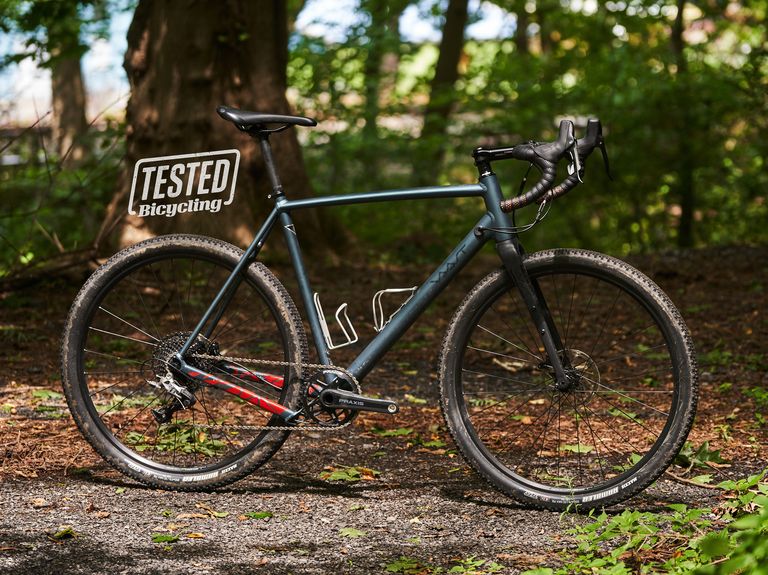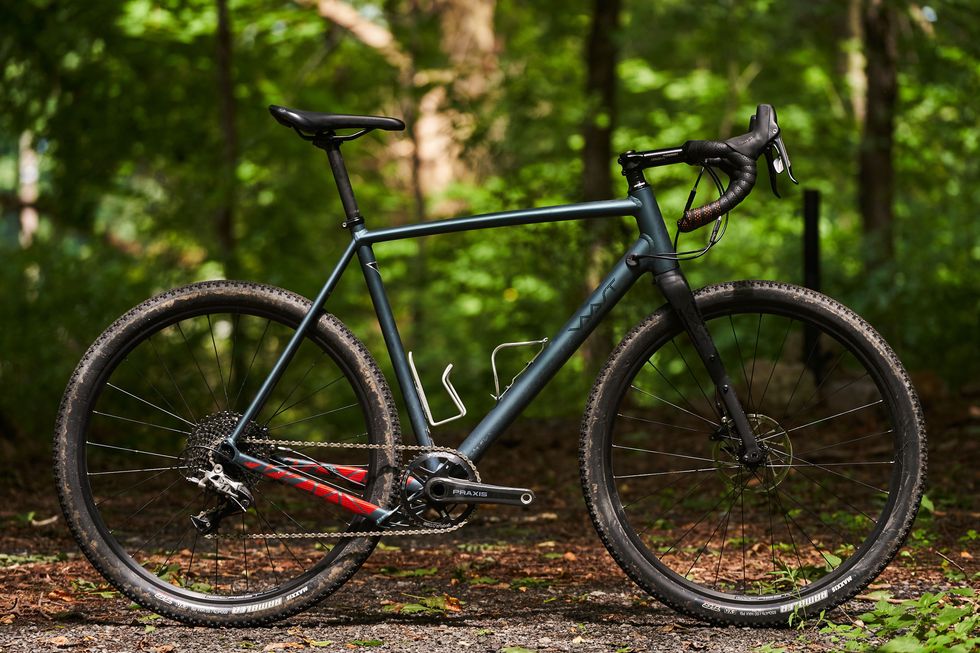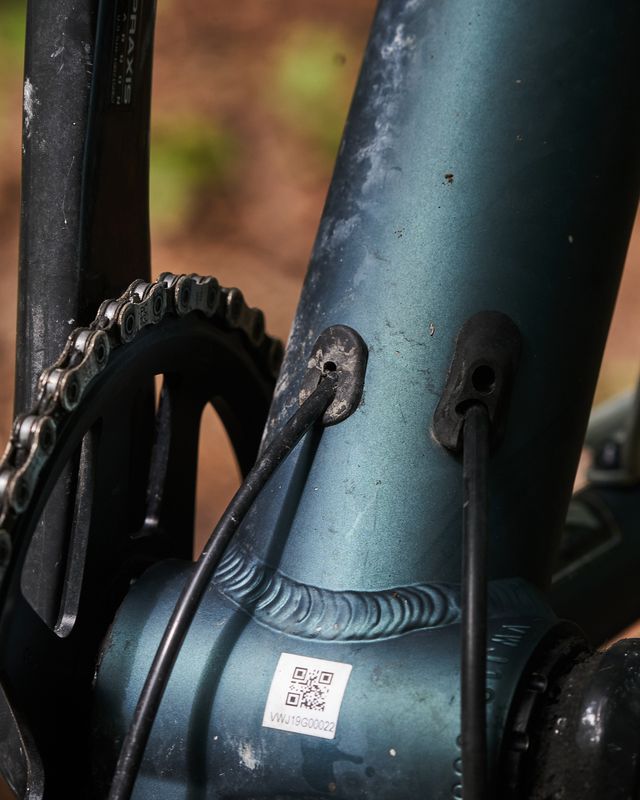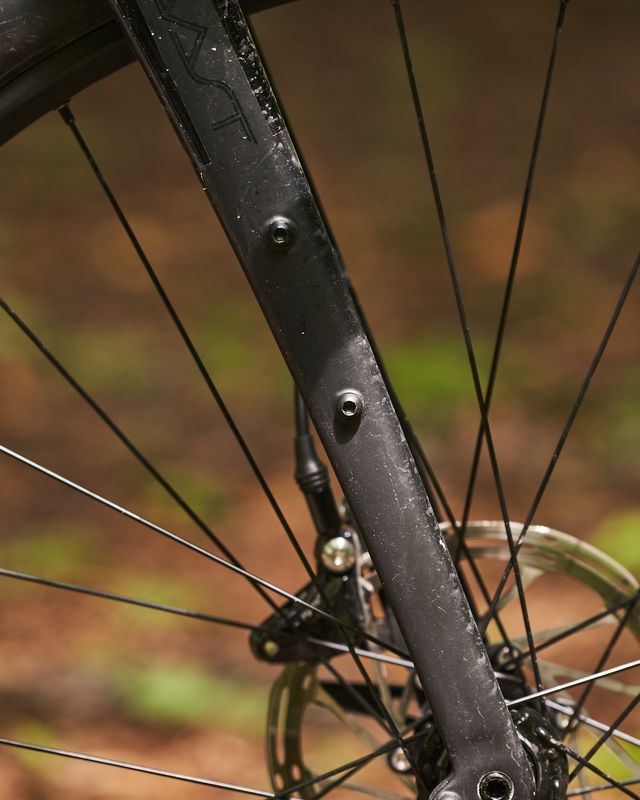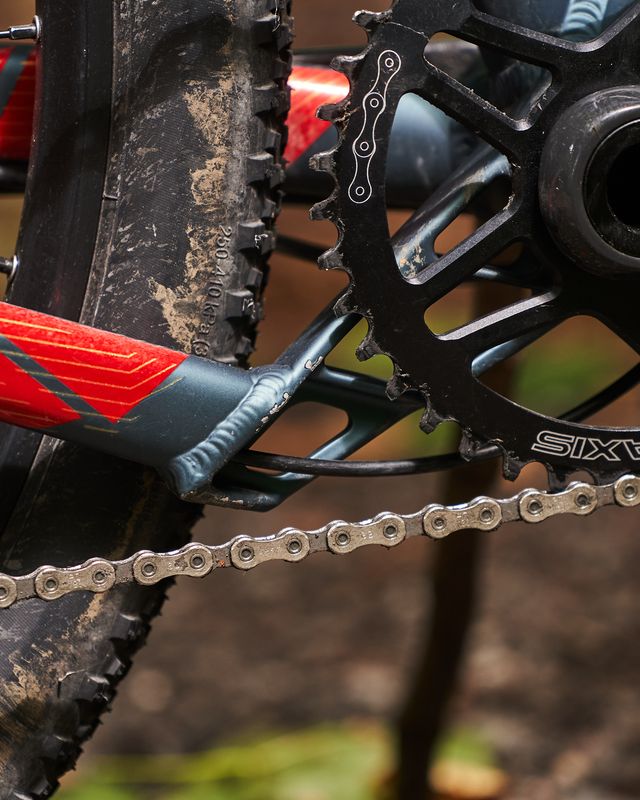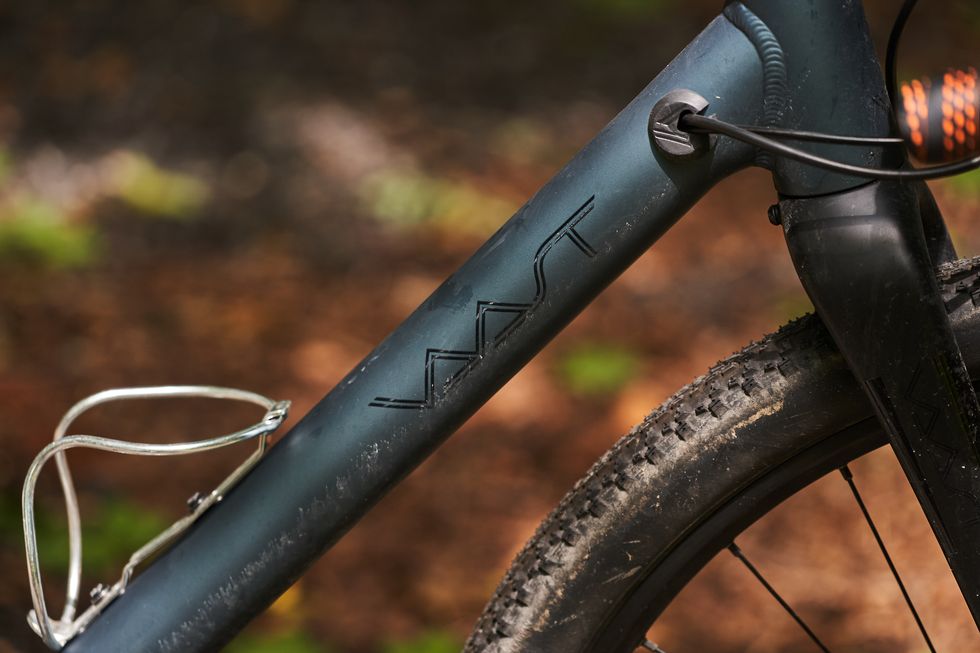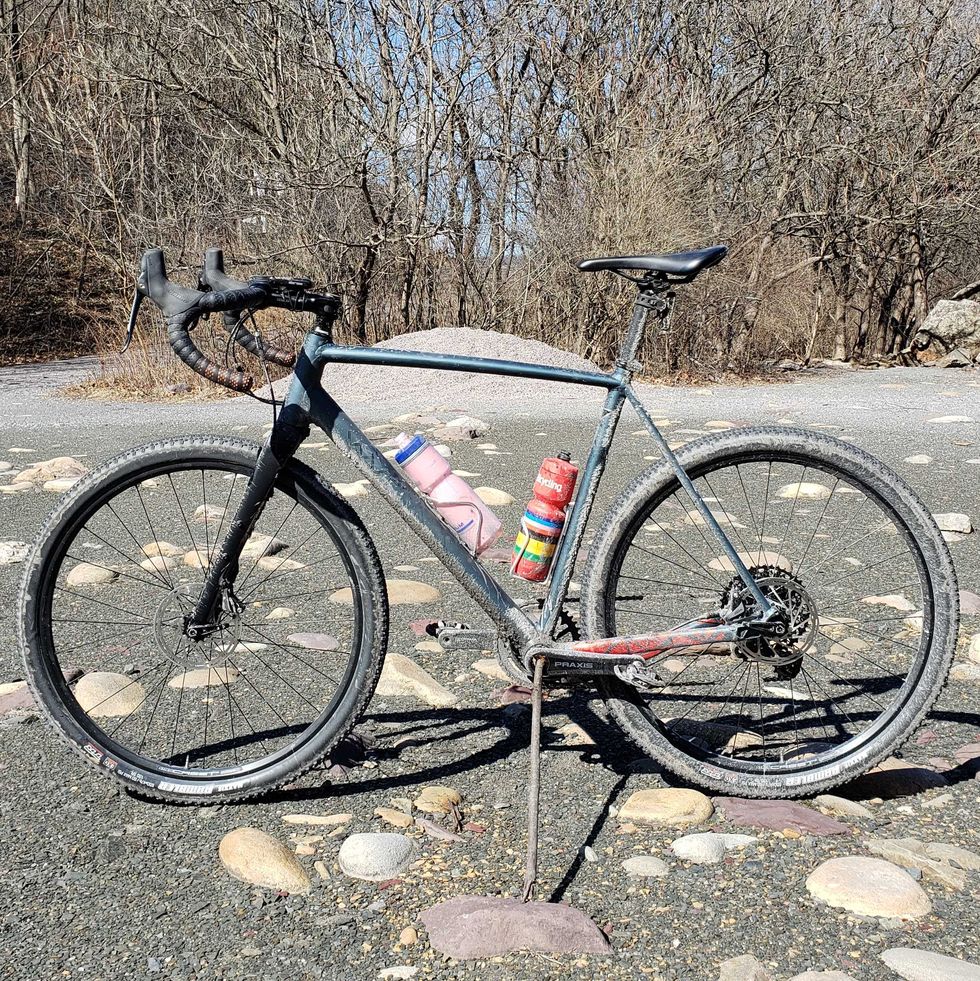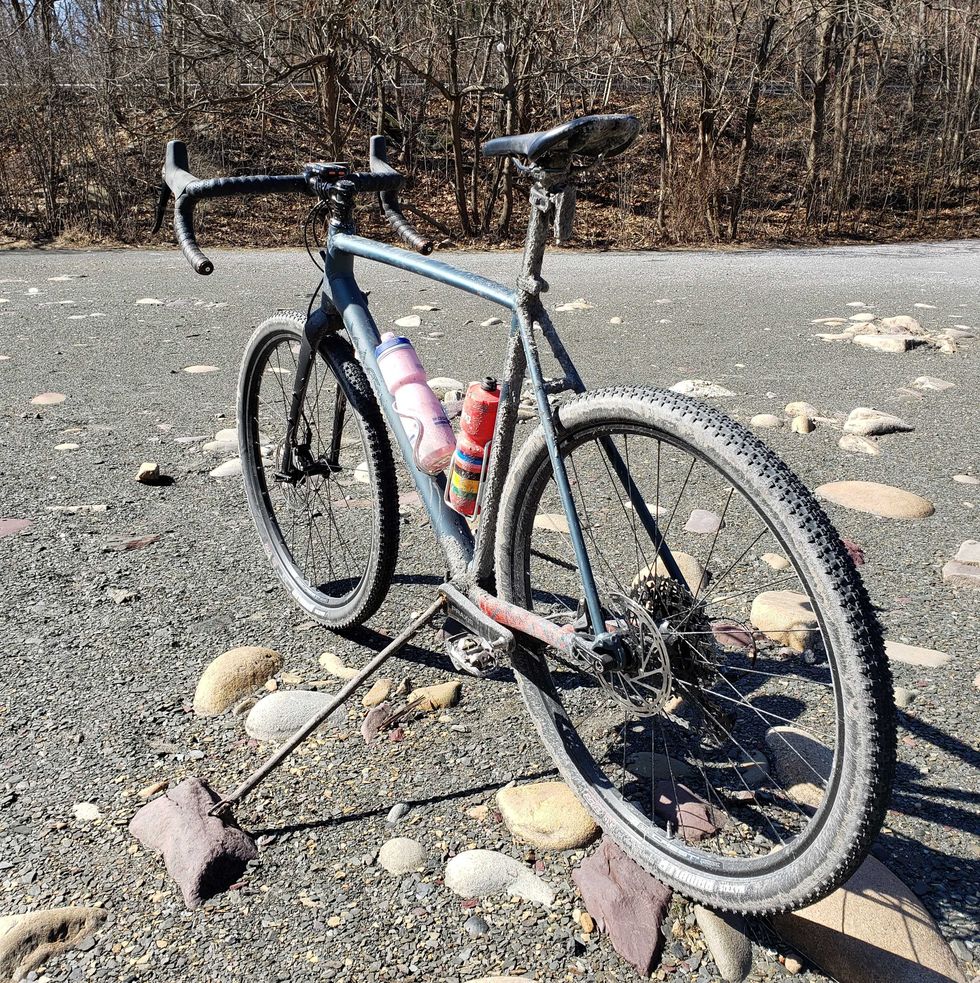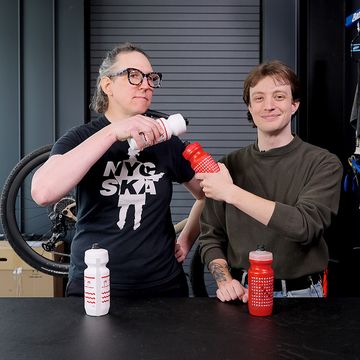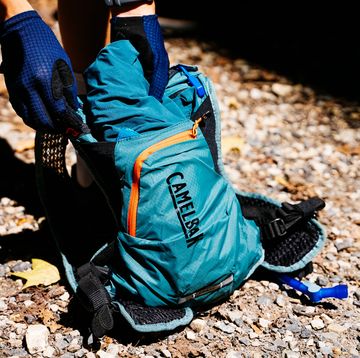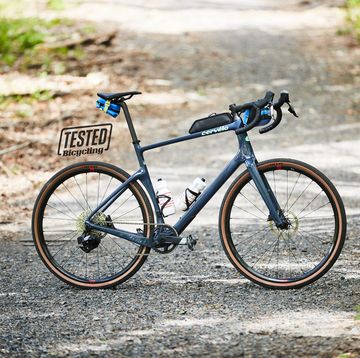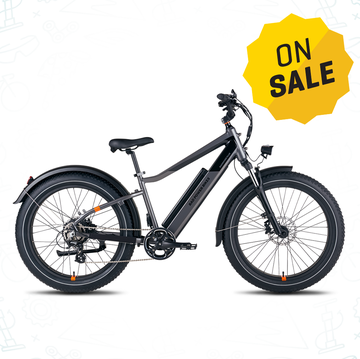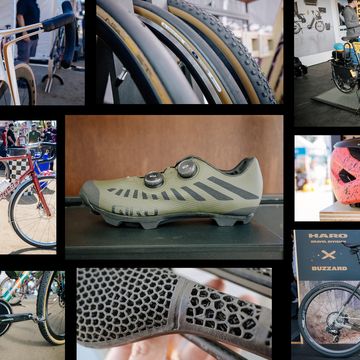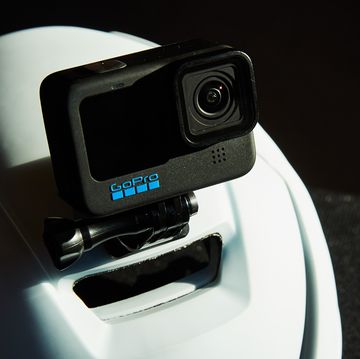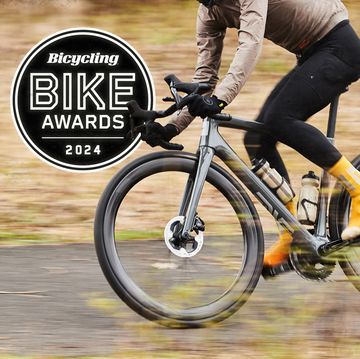The Takeaway: Vaast uses magnesium alloy for its A/1 Allroad to provide a peppy ride in a lightweight package.
- Allite Super Magnesium alloy resists corrosion and delivers a solid, torsionally stiff ride.
- Proven components and a SRAM Rival 1x drivetrain deliver reliable performance.
- Buyers can choose between 700C and 650B wheel/tire combinations.
Price: $2,500
Weight: 20.2 lb. (L)
Wheel size: 650B
Tire clearance: 42mm (700C), 50mm (650B)
The Vaast A/1 is one of the best deals in gravel bikes right now. If you haven’t heard, Vaast launched last year to give the cycling world an underutilized material: magnesium! Yes, the silvery metal used in fireworks and fire starters is now in bike frames, and no, your Vaast won’t become a road flare if you lay it down on the pavement. We’ll get into why that is shortly, but the stats show why you want a magnesium bike: a 1,200-gram frame (size medium) that’s claimed to be stronger and lighter than steel or aluminum and lighter than titanium. That makes for a stiff and lively ride that damps vibration pretty well and doesn’t weigh you down.
The A/1 Gravel also represents competitive value for the money. You can have the bike with 700C or 650B wheels; we tested the latter. The 700C bike gives you the option of a Shimano GRX gravel-specific drivetrain or a SRAM Rival 1 setup (both have 11 speeds and an 11-42t cassette), although the 650B bike is SRAM-only. The $2,500 price puts it in a league with entry-level carbon fiber bikes like the Specialized Diverge Base Carbon, but the A/1’s robust build quality and excitable ride should earn it a spot on anyone’s mid-level gravel bike shortlist.
Why Magnesium, Why Now
Vaast isn’t the first frame builder to mess with magnesium alloys, but it’s the only company to mass produce the frames with welded tubes in recent history. Magnesium is notoriously difficult to weld and prone to corrosion. And it presents a unique manufacturing challenge: Magnesium dust, if allowed to accumulate, can ignite. Those hurdles haven’t completely doused experimentation with magnesium. The UK-based Kirk Precision made cast magnesium bikes in the 1980s and ’90s, but the company folded in the mid’-90s. In 2004, Pinarello made a magnesium Dogma, bucking trends toward carbon and titanium. And the Colorado-based Paketa Custom Magnesium Bicycles has been working with the material since 2001.
The difference between Vaast and its predecessors is the backing of a growing materials provider: Allite Inc. It’s partnering with Vaast to debut its Allite Super Magnesium alloy for consumer use (the company says the material was previously reserved for “classified defense and aerospace application”). Vaast bikes have been in development for four years, but Allite has been working on Super Magnesium since 2006. The Allite factory uses regular cleaning, air purifiers, and filters to keep the production line safe, according to Vaast Bikes product manager Steven Fairchild. To prevent corrosion, Vaast drops the frames in an electrolyte bath that produces a ceramic coating on the inside and outside of the tubes. The process, called plasma electrolytic oxidation, provides better corrosion-resistance than traditional anodizing. The coating allows Vaast to make long-lasting bikes that don’t corrode or spark when you accidentally meet the pavement.
Allite makes general claims about magnesium’s strength-to-weight ratio, but they’re tough to parse without knowing the specific gauge of steel or aluminum they’re referring to. The thing to note is that Vaast’s frame is lightweight—about 300 grams lighter than an aluminum Canyon Grail—and it rides like a steel bike. So think steel, but lighter. (Oh, and it’s green; the fully recyclable magnesium alloy takes less energy to make than aluminum, Vaast says.)
Adventure Ready
The A/1 isn’t designed as a racer, although the 72-degree head angle and 425mm chainstays keep the handling tight. Rather, the bike is meant to go long, with rack and fender mounts and threaded bottom bracket cups that use enduro bearings for durability. The Maxxis Rambler tires, with their shallow tread, give you a great combination of low rolling resistance with grip over hard-packed gravel and singletrack. They’re not too knobby for road use, either, although you could find smoother-rolling tires for mostly on-road use.
Proven Components
Vaast picked well-known, reliable components to build out its A/1 gravel bikes. The SRAM Rival 11-speed drivetrain and hydraulic disc brakes worked well during testing, shifting crisply and stopping with plenty of force and modulation. The Stans NoTubes Crest rims are designed for cross-country use, so they should hold up to your gravel shenanigans and light trail riding. The Vaast bar tape has a nice, grippy feel.
Frame: AE81 Allite Super Magnesium
Fork: Vaast Allroad carbon
Rims: Stans NoTubes Crest 27.5
Tires: Maxxis Rambler 650x47B
Drivetrain: SRAM Rival 1, 11 speeds
Cassette: SRAM 11-42t
Crank: Praxis Zyante carbon 42T
Brakes: SRAM Rival 1 Hydraulic, 160mm rotors
Handlebar: Vaast Allroad aluminum, 420mm wide
Stem: Vaast Allroad, 6 degree, 90mm
Seat post: Vaast carbon fiber
Saddle: WTB Volt 142 Comp
The Ride
The A/1 feels solid but lively. Magnesium’s damping characteristics feel closer to steel and carbon than aluminum, a sweet spot that provides decent vibration reduction and a springy, direct pedaling experience. The full carbon fork improves the ride up front, too. As a point of comparison, I’ve also been riding a Lauf True Grit X, a full-carbon gravel bike with a suspension fork that yields front-axle comparisons pretty useless. But in the rear, despite having narrower 700c tires, the Lauf rides about as smoothly. Yet the A/1 feels no less exciting under hard acceleration and a bit more alive as you skip between rocks while taking a flyer on the local tow path. It corners nicely, too: The small wheels and 72-degree head angle give you a nimble, immediate turn-in.
The important question is whether to choose the 700C bike with 38mm Maxxis Rambler tires instead of the 47B Ramblers on the 650B bike. The 650x47B tires allow you to run lower pressures—below 20 psi if you go tubeless—and that tends to further improve the ride. The wider rubber also gave me confidence to send it through rock gardens and singletrack made with 2-inch tires in mind—stuff that would be iffy at best on a ’cross bike. On loose surfaces, the tires seem to float over the gravel instead of digging in. This sensation is a matter of preference. High-speed cornering feels a little less precise than I’ve found on gravel bikes with narrower 700C tires, but the drifty sensation is also really amusing once you get used to it.
But the 650Bs also roll slower and make an otherwise animated bike feel a bit sluggish. I’ve no right to complain, as I chose this variant to test, but in retrospect I think I’d have the 700C rig and enjoy the roll-over ability that becomes increasingly essential as your legs tire during, say, a 90-mile gravel adventure.
The mid-range gravel category is crowded with bikes that offer excellent performance and value for money. Buy the Vaast if you want a super solid-feeling gravel bike that rides like steel without the weight penalty.

A former Division 1 runner, Dan grew up riding fixies and mountain bikes and now reviews everything from performance running shoes to road and cross bikes, to the latest tech for runners and cyclists at Bicycling and Runner’s World.
